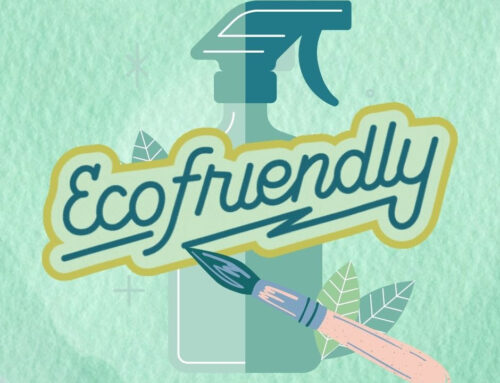3 Green Spring Cleaning Tips
Are you getting ready for Spring cleaning?
Are you interested in using green and environmentally safe practices to spruce up the office?
In this article we will discuss 3 easy green cleaning tips just in time for Spring cleaning!
Spring is upon us! Flowers blooming, birds chirping and the sun shining are all reasons to celebrate this wonderful season. It’s also a time for us to open the windows, open the doors and let some fresh air back into our homes or offices. Typically, this weather shift also starts a tradition that most of us call, Spring cleaning.
Spring cleaning comes with an unlimited amount of choices for cleaning products, vacuums, dusters and more. Unfortunately, harsh chemicals and inefficient tools can sneak their way into the office or building and cause an uproar of allergic reactions and other harmful symptoms. Let’s discover 3 easy tips to provide the most efficient clean and to keep it environmentally friendly.
#1 Eliminate 99% of Dust and Bacteria with One Swoop

Most of us have heard of the infamous microfiber material and how amazing it is. But, how effective is microfiber in removing all of that dust that accumulates over time?
Microfiber is a material that is made of synthetic fibers that attract dirt, bacteria, and other pathogens like a magnet. Microfiber tools are made to attract and capture up to 99% of dirt, bacteria and other pathogens, while cotton fiber tools are made to attract 33%- basically moving bacteria from surface to surface. Therefore, the use of microfiber cloths, mops, and other microfiber tools allow for the removal of bacteria, dirt and allergens, because microfiber is designed to attract and hold these elements. The image on the right shows the microfiber structure under a microscope in the top image; the bottom image is a regular cotton structure which ultimately pushes dirt & bacteria around, rather than collecting it. So, as you can see microfiber isn’t just a fad, it’s the real deal. Utilizing the following microfiber tools in your Spring cleaning regiment can eliminate 99% of dust with one swoop, maybe two!
Areas to use microfiber tools for green Spring cleaning:
- Dust wand for blinds, plants, fans, ceiling corners, wall art and other hard to reach areas
- Cloths for furniture (i.e. desks, conference tables, chairs, coffee tables), equipment (i.e. computer monitor and towers, printers)
- Dry mops for floor care
#2 “Are These Products Really Green?”
 Many products in the market today claim to be green and eco-friendly. However, in order to ensure that the cleaning product you are using in your office or building is in fact green, be sure to check the seal. For commercial use of green products, visit our post on Green Cleaning Product Certifications to learn more about the different types of green cleaning product certifications.
Many products in the market today claim to be green and eco-friendly. However, in order to ensure that the cleaning product you are using in your office or building is in fact green, be sure to check the seal. For commercial use of green products, visit our post on Green Cleaning Product Certifications to learn more about the different types of green cleaning product certifications.
For non-commercial use of green cleaning products, a good place to start is the Green Good Housekeeping seal. This seal verifies that products claiming to be ‘green’ implement a set of standards such as, reduction of water use in manufacturing, energy efficiency in manufacturing and product use, ingredient and product safety, packaging reduction, and the brand’s corporate social responsibility among other factors.
#3 Eradicate Embedded Dirt and Grime from Those Carpets!
We all know that carpets can hold many particles that can upset our allergies. But, carpets aren’t the only place that harvest dust, dirt and bacteria.
HEPA stands for high-efficiency particulate air. Dust mites, mold spores, pollen and pet dander in the air inside your office or work space can cause problems such as allergies and/or asthma. A HEPA filter is a type of mechanical air filter that works by forcing air through fine and randomly arranged set of fibers. It is designed to capture at least 99.97% of all particles 0.3 microns in diameter or larger, that enter into the filter (dust mites range from 2-10 microns in size). To learn more, visit our post on HEPA Filtered Vacuums.
Ways to use HEPA filtered vacuums for Spring cleaning:
- Vacuuming carpets to eradicate embedded dirt, bacteria, dust and other allergens.
- Vacuuming hard floors rather than sweeping, to minimize the spread of dust and dirt.
- Utilize an extension on the vacuum for hard to reach areas, dust sills, fan blades, plants, upholstered chairs, deep corners, etc.




